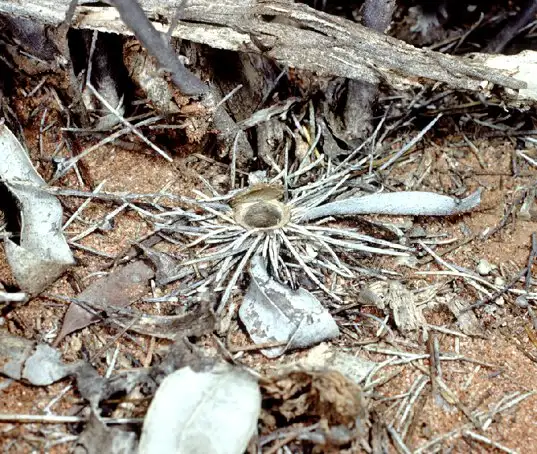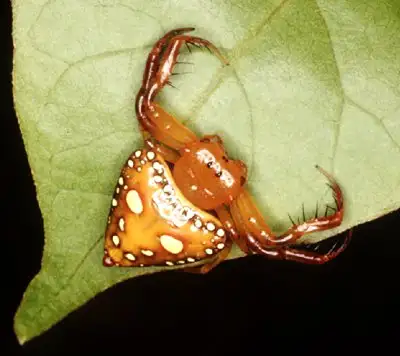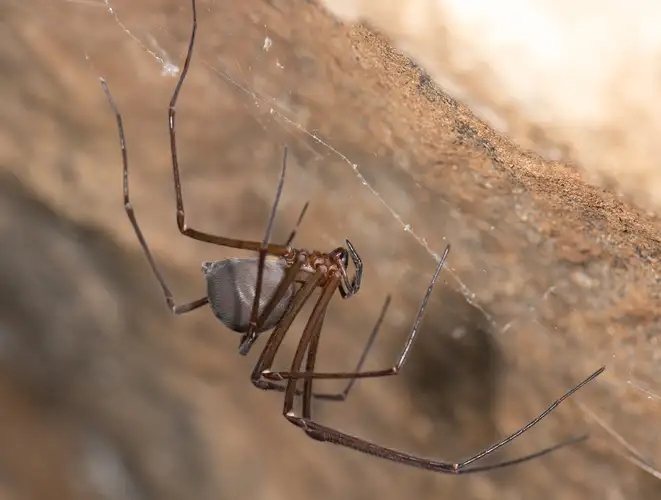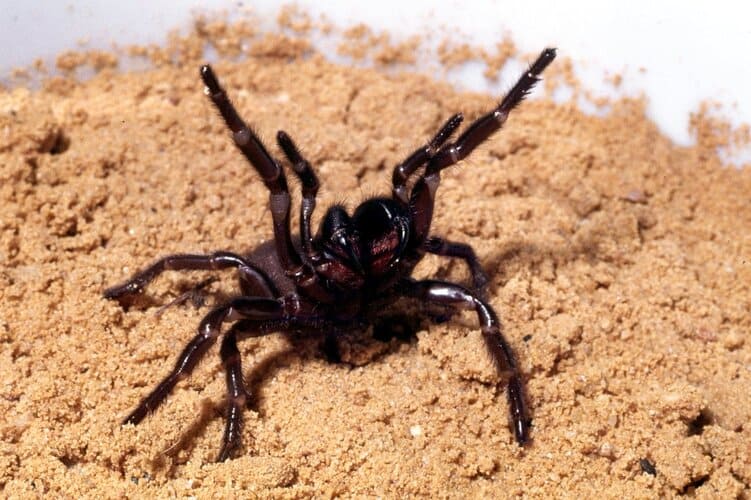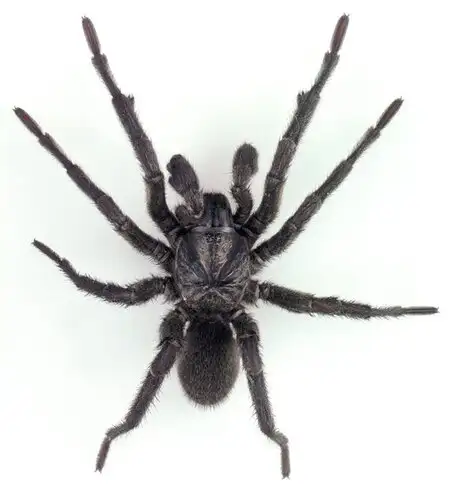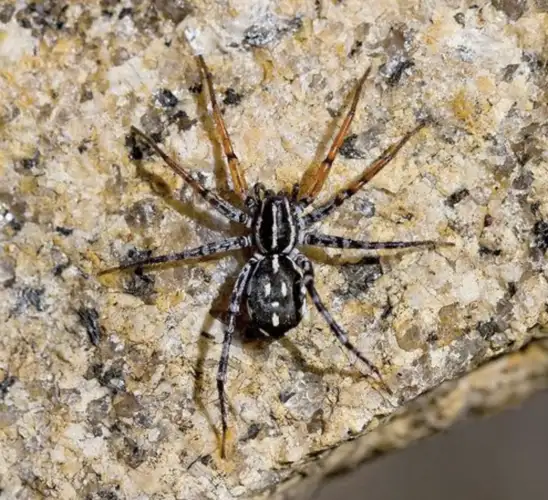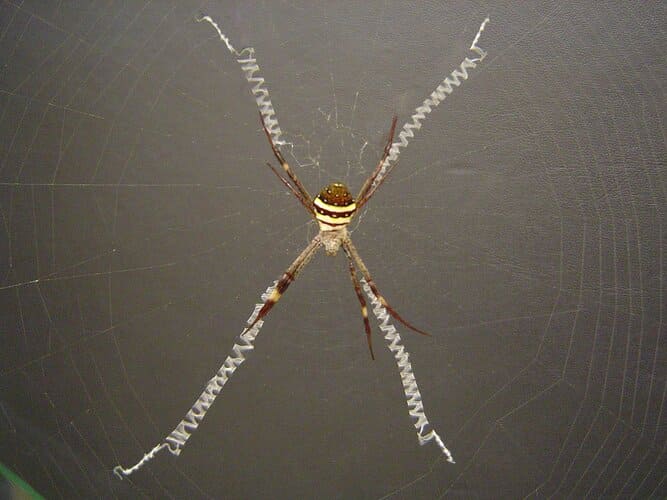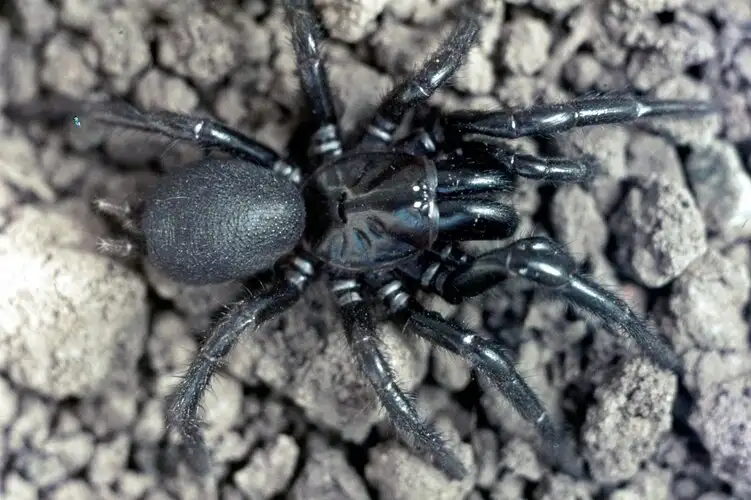Trapdoor spiders
IUCN
LCBasic Information
Scientific classification
- name:Trapdoor spiders
- Scientific Name:Idiopidae and related trapdoor spider families (representative group)
- Outline:Arthropoda
- Family:Idiopidae Trapdoor spiders
Vital signs
- length:Most adults about 10–40 millimetres in body length, with a few larger species slightly exceeding this range
- Weight:Small to medium sized mygalomorph spiders with body mass ranging from hundreds of milligrams to a few grams
- lifetime:Females can live for several years in the same burrow, while males usually survive for a shorter period after maturity
Feature
Group of burrow dwelling mygalomorph spiders that dig silk lined tunnels in soil and close the entrance with a camouflaged trapdoor, hunting at night from the burrow mouth.
Distribution and Habitat
Woodland edges, shrubland, grassland slopes, earth banks, field margins and gardens in temperate and tropical regions worldwide where stable, diggable soils are available.
Appearance
Robust brown or dark brown spiders with broad cephalothorax, strong fangs, rounded abdomen and short powerful legs, usually lacking bright colour patterns.
Details
Trapdoor spiders are a broad group of small to medium sized mygalomorph spiders that specialise in digging burrows in soil and closing the entrance with a hinged door. The name does not refer to a single species, but to many related spiders in families such as Idiopidae and Ctenizidae that share similar burrowing habits.
Taxonomy and Naming
Common name: Trapdoor spiders
Representative families: Idiopidae, Ctenizidae and several other closely related mygalomorph families
Higher classification: Phylum Arthropoda → Class Arachnida → Order Araneae → infraorder Mygalomorphae
General Appearance
Trapdoor spiders are robust ground dwelling hunters with a body form adapted for digging:
Body size: adults of most species range from about 10 to 40 millimetres in body length, with a few large species becoming slightly bigger;
Colouration: usually brown, dark brown or blackish with little bright patterning, helping them blend with soil and leaf litter;
Body form: broad, thick cephalothorax with powerful chelicerae and large fangs, rounded abdomen and short, strong legs;
Surface texture: carapace often smooth or slightly glossy, legs and abdomen clothed in short hairs that detect vibrations;
Sexual dimorphism: females are heavier and remain in their burrows, while mature males are slimmer and wander in search of mates.
Distribution and Habitat
Trapdoor spiders occur in many parts of the world, especially in temperate and tropical regions, including Australia, southern Africa, parts of Europe, North and South America and Asia.
They are typically associated with:
Edges of woodland, shrubland and grassland slopes;
Earth banks, road cuttings and rocky hillsides with suitable soil;
Field margins, pastures and garden beds;
Well drained soils that are not subject to frequent flooding.
They prefer stable, diggable substrates where long lived burrows can be maintained.
Burrows and Trapdoors
The defining feature of trapdoor spiders is their silk lined burrow and camouflaged door:
The spider excavates a vertical or sloping tunnel, often from a few centimetres to many centimetres deep;
The tunnel walls are lined with silk to strengthen the structure and help retain moisture;
The entrance is covered by a thick lid made of soil, plant fragments and silk that acts as a door;
One side of the door is attached to the tunnel with a silk hinge so that it can swing open and shut, lying flush with the surface when closed.
In some species additional silk lines are laid around the entrance to transmit vibrations from passing prey.
Behaviour and Diet
Trapdoor spiders are nocturnal ambush predators that hunt from the safety of their burrows:
During the day they remain hidden deep inside with the door closed;
At night they sit just behind the door with their front legs touching the lid or surrounding silk strands;
They feed on beetles, cockroaches, ants, millipedes, other spiders and occasionally small lizards or snails;
When prey approaches, the spider pushes open the door, lunges out, grabs and bites the victim, then drags it back into the tunnel.
Females may occupy the same burrow for many years, enlarging it as they grow. Males habitually leave their burrows once mature and are therefore more frequently seen moving across the ground.
Reproduction and Life History
Life cycles vary among species, but a general pattern is shared across many trapdoor spiders:
Mature males roam during warm, humid periods to seek female burrows;
At the entrance they tap on the door and silk to signal their presence and avoid being mistaken for prey;
Mating usually occurs inside or close to the burrow. After mating the female produces one or more egg sacs in the tunnel;
Spiderlings hatch and remain in the maternal burrow for some time before dispersing to dig their own small starter burrows.
Because burrows are stable shelters, many female trapdoor spiders can live for several years and are among the longer lived spiders.
Venom and Human Significance
Trapdoor spiders have large fangs and functional venom glands, but most species are not considered highly dangerous to humans.
Documented bites usually result in:
Local pain and tenderness at the bite site;
Mild redness or swelling that settles over hours or days;
Occasional stronger reactions in particularly sensitive individuals.
Basic wound care and observation are generally sufficient. A few species may have more significant effects and should be assessed using local medical and expert advice.
Ecological Role and Relationship with People
As ground level predators, trapdoor spiders help control populations of insects and other arthropods and form an important part of soil and leaf litter food webs.
In gardens and natural areas their burrows can often be left undisturbed. Provided that people avoid digging up burrows or placing high traffic paths directly over them, the spiders rarely come into direct conflict with humans and can continue to provide natural pest control.
FAQ
Q1. Are trapdoor spiders dangerous to humans?
Most species are not regarded as highly dangerous. Their bites can be painful and cause local swelling,
but serious systemic effects are uncommon for the majority of trapdoor spiders.
Q2. How can I recognise a trapdoor spider burrow?
The burrow appears as a small round or oval opening in soil with a thick, hinged lid that matches the surroundings.
The door can be gently lifted to reveal a silk lined tunnel below, although this should be done carefully.
Q3. Should trapdoor spiders be removed from gardens?
In most situations removal is not necessary. They provide natural pest control and prefer to stay concealed in their burrows.
If a burrow is in an inconvenient place, it is better to move a block of soil containing the burrow than to destroy it.
Q4. What is the difference between trapdoor spiders and funnel web spiders?
Trapdoor spiders build burrows with hinged doors and many species have relatively mild venom for humans.
Funnel web spiders usually have open burrows or silk retreats and some species possess highly potent venom,
so they are managed more carefully in regions where they occur.

